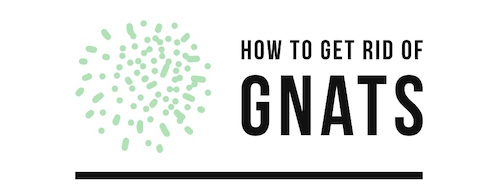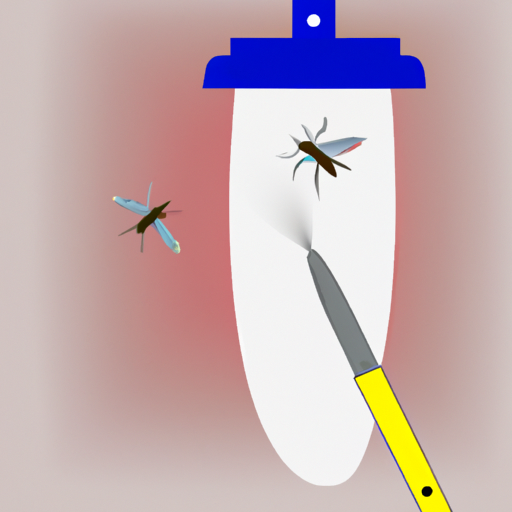How to Identify Fungus Gnats and Their Life Cycle
Fungus gnats are small, dark-colored flies that are commonly found in moist environments. They can be identified by their slender bodies and long legs. The adults have wings and measure about 1/8 inch in length. Fungus gnats have a four-stage life cycle: egg, larva, pupa, and adult.
The female fungus gnat lays her eggs near the base of plants or on the surface of soil that is rich in organic matter. The eggs hatch within three to five days into larvae which feed on decaying plant material or fungi for two to three weeks before pupating into adults. Adult fungus gnats live for about one week during which time they mate and lay more eggs to start the cycle again.
Fungus gnats can become a nuisance when they enter homes through open windows or doors as they search for food sources such as houseplants with moist soil or decaying organic matter like fruits and vegetables left out on countertops or stored improperly in pantries. To control an infestation, it is important to identify where the source of moisture is coming from so it can be eliminated if possible; this will help reduce the number of new adults emerging from pupae each week and eventually eliminate the population over time.
Natural Ways to Get Rid of Fungus Gnats
Fungus gnats are small, dark-colored flies that can be found in moist areas of the home. They feed on decaying organic matter and fungi, and can become a nuisance if they start to breed indoors. Fortunately, there are several natural ways to get rid of fungus gnats without using harsh chemicals.
1. Reduce Moisture: Fungus gnats thrive in moist environments, so reducing moisture levels is key to getting rid of them. Make sure all areas of your home are well ventilated and dry out any wet spots quickly. Fix any plumbing leaks or other sources of water that could be contributing to the problem.
2. Remove Organic Matter: Fungus gnats feed on decaying organic matter such as plant debris or compost piles, so removing these from your home will help reduce their numbers significantly. Clean up any spilled soil or plant debris immediately and dispose of it outside the house if possible.
3. Use Beneficial Insects: Certain species of beneficial insects such as nematodes can help control fungus gnat populations by feeding on their larvae in the soil where they live and breed. These beneficial insects can be purchased online or at garden centers and should be applied according to package instructions for best results.
4 . Use Traps: Sticky traps placed near plants can help catch adult fungus gnats before they have a chance to lay eggs in the soil around them . These traps should be checked regularly and replaced when needed for best results .
5 . Change Potting Soil : If you suspect that your potting soil may contain fungus gnat larvae , it’s best to replace it with fresh potting mix . This will help prevent new infestations from occurring while also eliminating existing ones .
The Benefits of Using Insecticides to Control Fungus Gnats
Insecticides are a common and effective way to control fungus gnats, which are small, dark-colored flies that feed on fungi and decaying organic matter. Fungus gnats can be a nuisance in homes, greenhouses, and other areas where they breed. They can also damage plants by feeding on their roots or leaves. Insecticides provide an effective solution for controlling these pests.
Insecticides work by killing the adult fungus gnats as well as their larvae before they have a chance to reproduce. This helps reduce the population of these pests in an area quickly and effectively. Insecticides also help prevent future infestations by creating a barrier that prevents new adults from entering the area or laying eggs there.
Insecticides come in many forms including sprays, granules, baits, dusts, and aerosols. Each type has its own advantages depending on the situation at hand; for example sprays may be more suitable for indoor use while granules may be better suited for outdoor applications such as gardens or greenhouses where larger areas need to be treated at once.
Using insecticides is often more cost-effective than other methods of pest control such as traps or natural predators like ladybugs because it requires fewer applications over time due to its long-lasting effects against fungus gnats and other insects alike. Additionally, insecticide treatments are generally safe when used according to label instructions since most products contain low concentrations of active ingredients that break down quickly after application so there is no need to worry about long-term environmental impacts from their use either indoors or outdoors.
Overall insecticide treatments offer an efficient way of controlling fungus gnat populations while providing peace of mind knowing that your home or garden is protected from these pesky pests without having to resort to more expensive methods of pest control like traps or natural predators like ladybugs which require frequent reapplication over time in order to remain effective against them
How to Prevent Future Infestations of Fungus Gnats
Fungus gnats are small, dark-colored flies that can be found in moist soil and decaying organic matter. They can become a nuisance when they enter homes and buildings, but they do not cause any significant damage. To prevent future infestations of fungus gnats, there are several steps you can take:
1. Reduce moisture levels in your home or building: Fungus gnats thrive in moist environments, so reducing the humidity levels will help to discourage them from entering your home or building. Make sure to use dehumidifiers and fans to keep the air dry and reduce condensation on windows and other surfaces.
2. Remove sources of standing water: Standing water is an ideal breeding ground for fungus gnats, so it’s important to eliminate any sources of standing water around your home or building such as clogged gutters or leaky pipes.
3. Clean up organic debris: Fungus gnats feed on decaying organic matter such as leaves, grass clippings, compost piles, etc., so it’s important to clean up these materials regularly to reduce their food source and discourage them from entering your home or building.
4. Use insecticides: If all else fails, you may need to use insecticides such as pyrethrin-based products which are effective against fungus gnat larvae but safe for humans and pets when used properly according to the instructions on the label.
Tips for Keeping Your Home Free from Fungus Gnat Infestations
1. Keep your home clean and free of debris: Fungus gnats thrive in moist, dark environments, so it is important to keep your home clean and free of debris. Vacuum regularly to remove any organic matter that may be providing a food source for the gnats.
2. Remove standing water: Standing water is an ideal breeding ground for fungus gnats, so make sure to check around your home for any sources of standing water and eliminate them as soon as possible. This includes checking under sinks, around plants, and in other areas where moisture may accumulate.
3. Use sticky traps: Sticky traps are an effective way to monitor the presence of fungus gnats in your home and can help you identify problem areas before they become infested with the pests. Place sticky traps near windowsills or other areas where you suspect there may be a problem with fungus gnat activity.
4. Use beneficial nematodes: Beneficial nematodes are microscopic worms that feed on fungus gnat larvae and can help reduce their population in your home without using harsh chemicals or pesticides that could be harmful to humans or pets if used incorrectly or excessively applied indoors.
5. Treat soil with insecticides: If all else fails, treating the soil around affected plants with insecticides can help kill off adult fungus gnats before they have a chance to lay eggs in the soil again and start another infestation cycle inside your home

